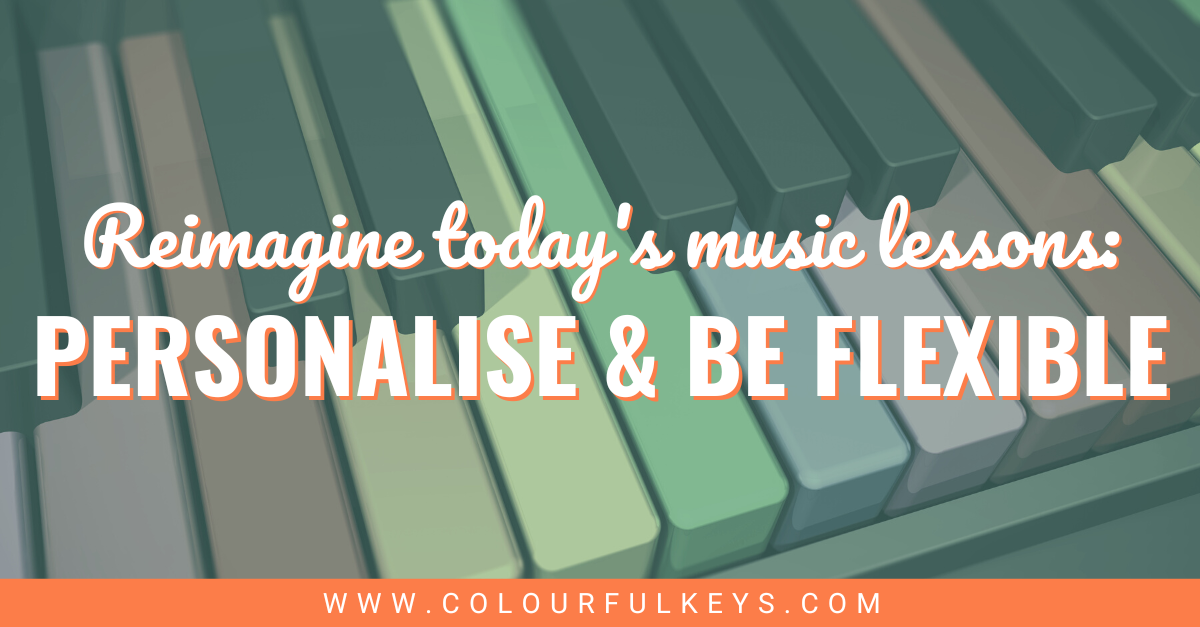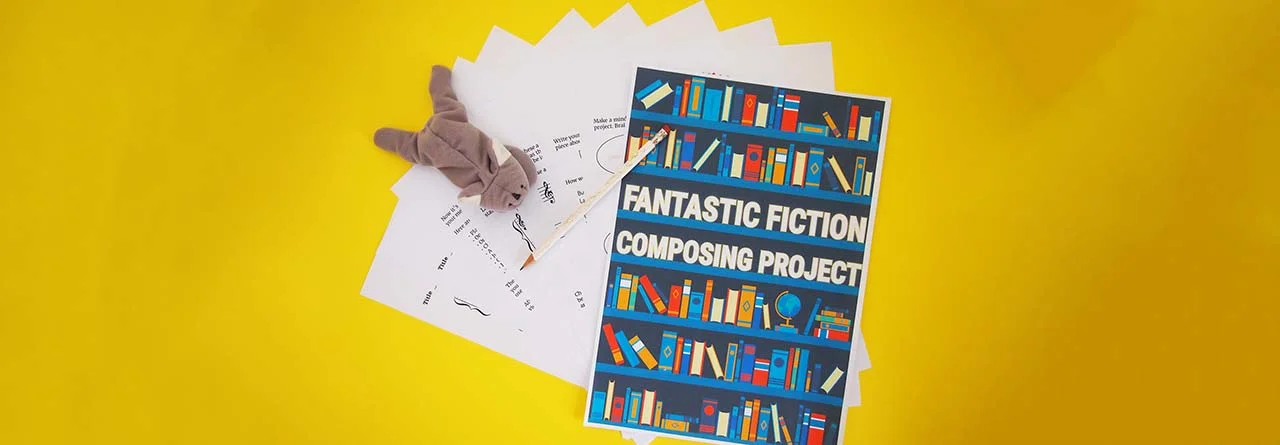
This article about a more modern approach to piano teaching was written by Paul Myatt. Paul is a passionate music teacher, performer, composer and workshop facilitator. He teaches 50 students, beginner to advanced, in just 9 hours of group lessons per week. Paul and his colleague Gillian Erskine created ForteMusic in 1993, which now has nearly 8,000 students across Australia, New Zealand, the UK and the US. In 2019, Piano Teaching Success was created to help teachers engage and motivate their students through what Paul calls “Whole Body Learning”.
Every piano student is unique, with their own learning style, goals and interests. In order to meet the needs and expectations of students today and beyond, we must re-imagine the perfect piano lesson to make it more personal, connected and joyful for both teacher and student.

When you think of “the perfect piano lesson”, what comes to mind?
Perhaps it’s moving through a new piece every week, covering the right concepts at the right time with a student who is happily engaged, creative and appropriately critical of their playing. Each week, this student diligently practises their pieces and comes to you with a list of questions.
Is this realistic? Or just a fantasy?
And, even if it is a fantasy, would it really be a “perfect” piano lesson?
Personalise and Be Flexible
The first challenge in modern piano teaching is catering to each student’s individual needs and preferences.
Just as every teacher is different, so is every student.
Today’s kids are tech-savvy and have a far more sophisticated auditory experience than students from just 20 years ago, before YouTube, Spotify or Apple Music.
Last week, one of my students (let’s call him Jack) had a meltdown about his parents wanting him to prepare for an exam. I asked him if he liked learning piano, and he said he did.
At 13 years old, Jack wanted to play songs that he and his friends knew. So I asked him what he’d like to learn. He said, ‘Ylang Ylang’.
My response: “Huh?”
When note reading won’t work…
So we looked up ‘Ylang Ylang’ on YouTube while I sneakily directed my iPad to Musicnotes.
My eyes popped out of my head as I looked at the first page of the score. “Hmmm, 5 flats,” I thought. Meanwhile, Jack had found a tutorial of ‘Ylang Ylang’ on YouTube, so we listened.
Beautiful music.
I was shocked that this 13-year-old boy would be interested in music described as neo-soul or French jazz.
…Rote and aural learning save the day
Having looked at the music, I knew he couldn’t learn it by reading. So I decided to give this rote learning opportunity a go.
Jack loved it. He practised all week and, at the next lesson, was able to play the first section along with the YouTube clip.

Not only was he happy, but I was happy. In fact, Jack was so happy that he readily returned to the exam pieces.
If you were to ask Jack, he would certainly say that week was his version of the perfect piano lesson. And experiencing this “perfect lesson” energised and motivated him to look at his exam pieces anew.
Make Human-to-Human Connections
Creating a positive and engaging learning environment builds strong connections with the student, which is essential when aiming for the perfect piano lesson in modern piano teaching.
One way to create such an environment is to show interest in your student’s musical preferences, hobbies and goals, like I did with Jack.
But there are also other ways to foster this connection.
Critical Listening
Have you ever engaged your students in their own feedback, or are you always the one to carve the path?
Be curious about their thoughts on their own playing. Ask them why they say this or that. Use a device to record students, giving a bird’s eye view of their own playing.
Continually engaging students in the feedback loop will help them understand how to be more independent as they progress.
Use the Tools Your Students Use
Another way I create connections with my older students is via Whatsapp or iMessage – my students’ go-to messaging apps.

I often ask students to send me a video of them playing during the week. And, funnily enough, no one sends a bad performance. Students all seem to practise hard to ensure it is at least an OK performance.
The added bonus of this strategy is that it tends to be a great way to ensure more practice time. 🙌
Emphasise Joy and Creativity
Learning to play the piano should be a joyful experience that stimulates creativity.
At Vibrant Music Teaching, Nicola loves to encourage creativity through studio-wide composition projects such as the ‘Fantastic Fiction’ project. Enter your info below and she’ll send you the project file for free.

Subscribe to the newsletter and get the Fantastic Fiction Composing Project
Enter your details to subscribe to the newsletter for piano teachers with information, tips and offers.
I hate spam as much as you do! I will only send you emails related directly to piano teaching and you can unsubscribe at any time.
VMT members can download this and other exclusive composition projects from the Printable Library. Not a member? Check out the membership at www.vibrantmusicteaching.com.
To produce a more joyful and creative (and therefore “perfect”) piano lesson, consider using a multisensory and multimodal teaching approach like Whole Body Learning (WBL).
Confident Learners = Happy Students
As piano teachers, we know that students are a joy to teach when they’re learning confidently. Multisensory and multimodal teaching strategies are a great way to help instil that confidence.
I was lucky enough to be part of Dr. Robyn Staveley’s 2020 PhD thesis, ‘Embedding Embodied Cognition and Cognitive Neuroscience in Music Pedagogy’. In this interview, Dr. Staveley speaks to Gillian Erskine about how a multisensory approach is beneficial for the brain.
These non-traditional ways of approaching lessons can make learning easier for students because the memories are put in the correct place in the brain from the start, leading to less complicated retrieval down the road.
Nicola explores many more non-traditional ways to approach music lessons via the resources on her ‘Planning Piano Lessons’ page.
Intuitive Learners = Creative Students
One benefit of an approach like WBL is that it simultaneously builds across all the key skill areas for playing the piano: rhythm/beat, repertoire, tonality, technique, reading, aural/listening, creativity, ensemble playing and theory.
Supporting all of these key skill areas simultaneously is one way of reimagining a “perfect lesson”.
At its core, music is an auditory experience much like language. So to demonstrate how this view of a perfect lesson works, let’s compare learning music to learning language.
The natural learning process for language acquisition is:
- Listen
- Speak
- Read
- Write
When teaching music, this becomes:
- Listen
- Sing
- Play
- Read
- Write
In this natural process, exploration of sound is important and will help develop creativity.
And while music reading is important, students don’t always internalise all the information from the written music. This is where becoming comfortable with improvisation and creativity can play a key role.
Key Takeaways
Personalisation and flexibility, building a connection with the student and emphasising joy and creativity are the keys to unlocking your students’ potential, giving them a love and appreciation for music for their whole life.
As you seek to re-imagine the perfect piano lesson, try some of the strategies below:
- Remember that music-reading isn’t the only way to learn piano, so be able to adapt to different learning styles.
- Incorporate diverse music styles to cater to different interests and cultural backgrounds.
- Be flexible with your lesson plans according to the student’s goals, skill level and pace of learning.
- Use the technology students are using such as Whatsapp, iMessage and YouTube to share videos and explore rote learning opportunities.
By re-imagining the perfect piano lesson as one that’s more personal, connected and joyful, you can create a more fulfilling and effective learning experience for your students.

What would your students consider a perfect piano lesson?
I’d love to hear your thoughts in the comments below.